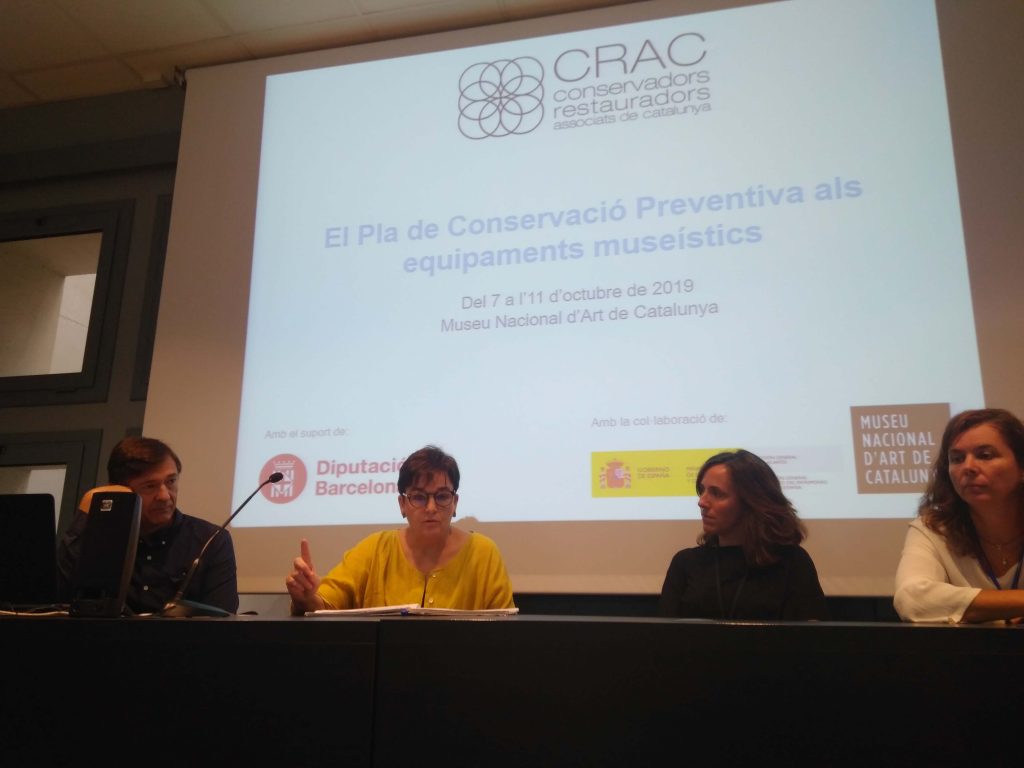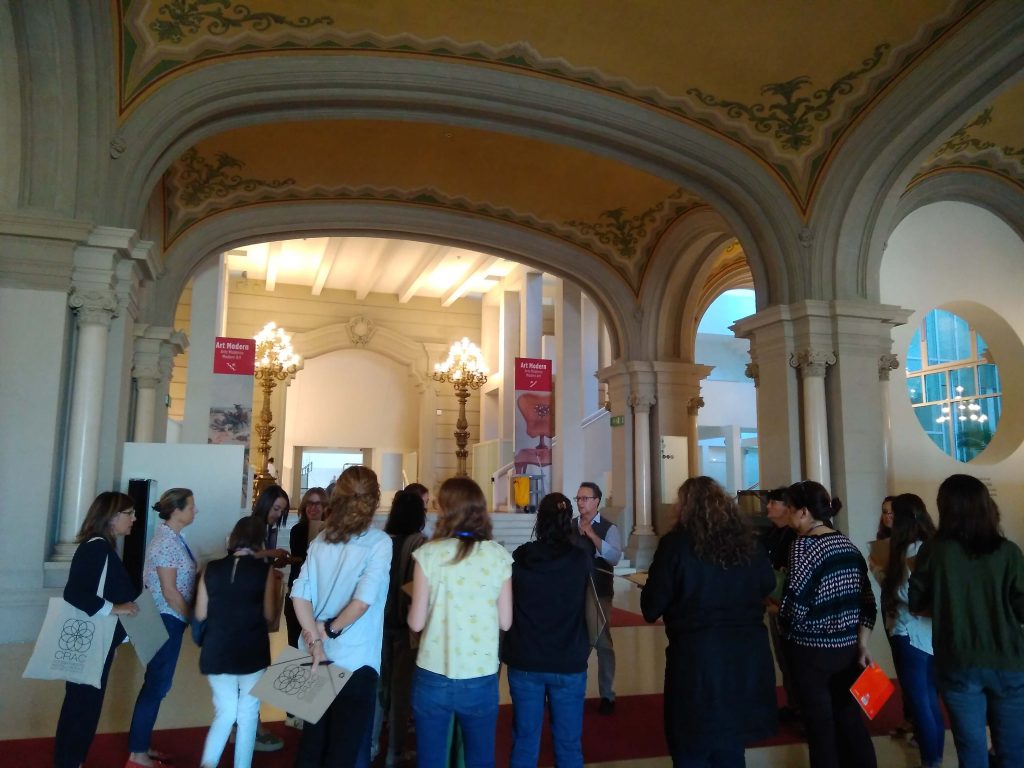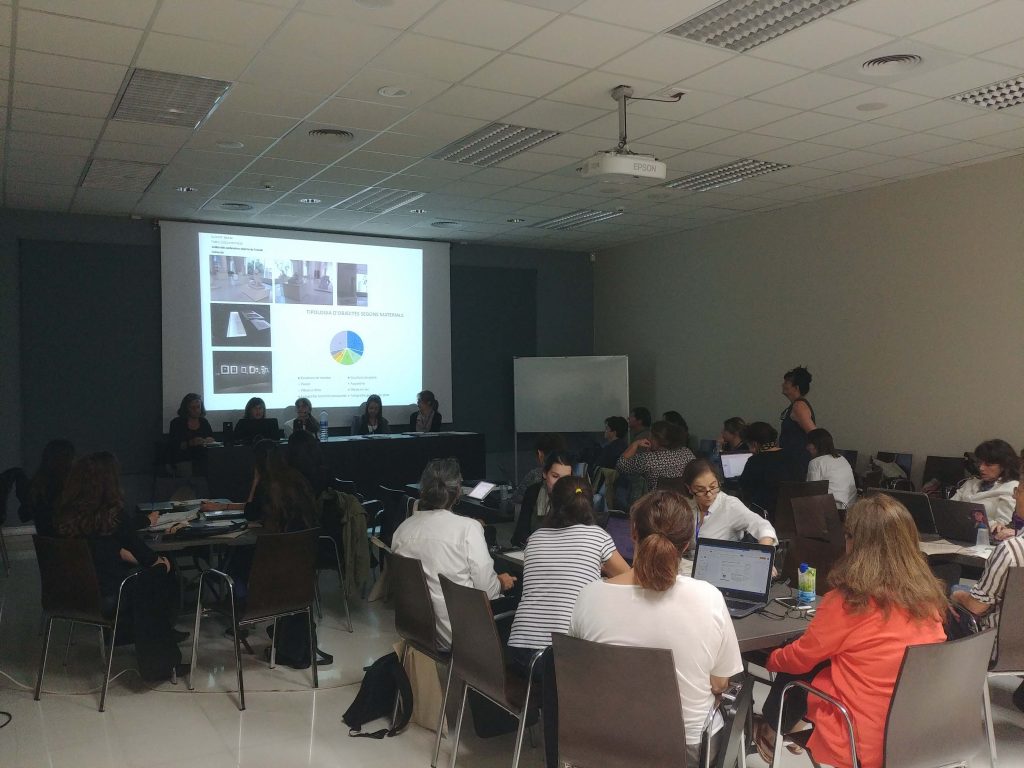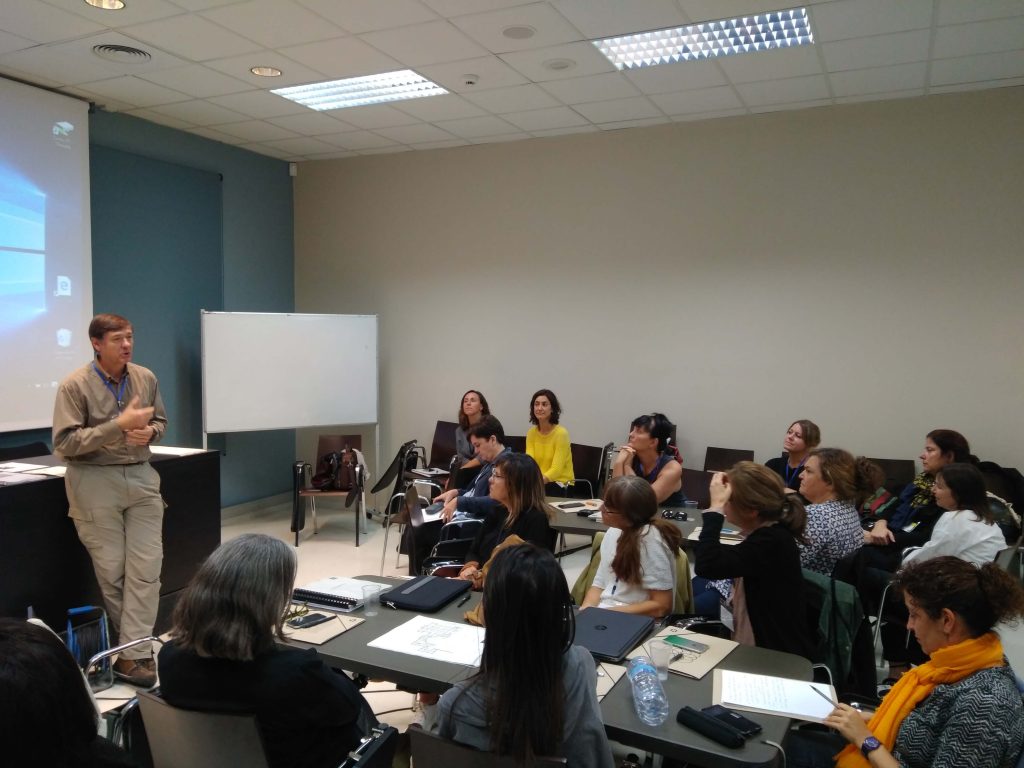Juan Antonio Herráez
During the week of 7-11 October, all around the museum facilities one could see many conservators without their characteristic white lab coats. The museum hosted the course The Preventive Conservation Plan in Museums, organised by CRAC (Associated Conservators-Restorers of Catalonia), in collaboration with the Museu Nacional d’Art de Catalunya itself and IPCE (Institute of Cultural Heritage of Spain), as well as the support of the Diputació de Barcelona – the Provincial Council of Barcelona. The museum’s preventive conservation technicians Ruth Bagan and Benoit de Tapol collaborated in the preparation and development of the course.

The main goal of this training activity was to promote prevention as a strategic priority for the protection of cultural heritage in the current context, which shows that preventive conservation is a key element for preservation of this heritage. So much so that the Museu Nacional d’Art de Catalunya has recently included the elaboration of its own Preventive Conservation Plan in its Strategy and Action Plan 2019-2022/2029, and the Catalan Museums Plan is currently developing the points that make reference to this discipline.
Thirty conservators took part on the course, and the training was eminently practical. The main goal was to put into practice the methodological model developed by IPCE, in which the Preventive Conservation Plan becomes a management tool around which the conservation strategy for the collections of an institution is articulated in the short, medium and long term.

In its approach, the plan seeks to make compatible the uses of the collections with their conservation, and to facilitate their access with the least possible risk, by means of the programming of continuous efforts over time and getting the most out of the resources available. In this way, it integrates the principles of sustainability, resource optimization and accessibility into the conservation strategy.
Once the methodological model was presented, the aim was to give the course a practical approach in such a way that the thirty attendees could put into practice the theoretical knowledge gained. To do so, three museum spaces were selected: a storage room, a part of the permanent exhibition and, finally, a space -currently closed to the public- to study its feasibility as an exhibition room. In order to develop this practical part, the information provided by various departments of the museum, especially the Department of Infrastructure and General Services, was essential.

After the theoretical presentation of the working method, the course participants worked hard for four days, to take in the documentation received and address the various stages of execution of a Preventive Conservation Plan, by presenting and discussing the results obtained.
In the last session, the working groups presented the final results, which comprised the risk assessment and a proposal of actions and protocols for the control of the threats identified in each of the three spaces selected for the practices.

With this structure, the aim was to achieve the main goal of the course, working in a practical way according to a specific methodology and with a teamwork dynamic, essential for the development and implementation of a preventive conservation strategy in any museum institution. The response from the attendees was very enthusiastic and participatory, so the results were very useful for everyone.

Juan Antonio Herráez
Conservation Scientist. Responsible of the Preventive Conservation Department at IPCE (Cultural Heritage Institute of Spain).







